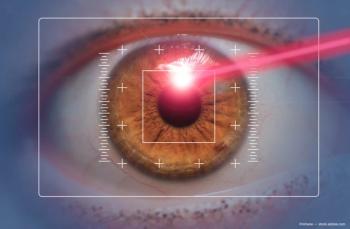
Which devices produce more repeatable astigmatism data?
By Michelle Dalton
New Orleans-As more patients are identified with visually significant astigmatism, more precise and more repeatable measurements are going to continue to be needed to ensure the right power toric lens is used, and to ensure the proper placement of the toric lens.
Some studies report rates of astigmatism greater than 1 D as high as 42% in Caucasians, and as high as 1.25 D in 28% of Asians, according to Avi Ohayon, MD.
Speaking at ASCRS 2016, Dr. Ohayon said that unfortunately, there is no one single “gold standard” device to use for the measurements, leaving clinicians without a means to identify which of the various devices is most accurate.
In additional to manual keratometry, clinicians can use Scheimpflug imaging devices (i.e., the Pentacam), Placido disc devices (Atlas topographer), or automated keratometry (e.g., IOLMaster 500, Lenstar LS 900, or Nidek ARK-530 A).
Reports of patients with with-the-rule astigmatism being over-corrected while those with against-the-rule astigmatism being under corrected have only added to the confusion, as had the knowledge that with-the-rule astigmatism tends to decrease with age.
Taking the posterior cornea surface into consideration when evaluating these eyes also is now recognized as an important variable.
“It’s important to remember astigmatism is a vector,” Dr. Ohayon said.
Comparing repeatability
Dr. Ohayon and colleagues compared the repeatability of the astigmatism measurements taken by the various devices on healthy eyes.
“It’s important to note we evaluated repeatability, not the accuracy, of these devices,” Dr. Ohayon said.
Accuracy studies would need to enroll substantially more eyes, others have said.
The group recruited 32 eyes, but excluded five. The majority of patients (82%) female, and the average age was 40 years old. Inclusion criteria included no ocular pathology, no history of contact lens wear, and no previous ocular surgery.
The researchers performed two sets of corneal measurements on 28 right eyes at an interval of 5 to 10 days. Each eye underwent two exams for the vector analysis, Dr. Ohayon said.
All exams were done by an experienced optometrist, and all measurements adhered to strict validation criteria. Repeatability was evaluated by comparing the differences between the two measurements at the J0 and J45 vectors, Dr. Ohayon said.
“Overall, the Pentacam and the Lenstar readings were tighter and more repeatable than the other devices,” he said.
Using the Lenstar, 78.6% of eyes had an absolute power difference of the measured corneal astigmatism of 0.25 D, followed by the Pentacam (71.4%), Nidek (60.7%), IOLMaster (42.9%), and the Atlas (35.7%). The absolute power difference of the measured corneal astigmatism of 0.5D or was 96.3% in both the Pentacam and Lenstar, but only 77.8% in the IOLMaster.
“Although this study measured only repeatability, repeatability is a needed aspect of accuracy,” Dr. Ohayon said. “The implications of these findings should be considered for surgical planning and monitoring of postoperative astigmatic outcomes.”
Dr. Ohayon is a consultant to Haag-Streit.
Newsletter
Don’t miss out—get Ophthalmology Times updates on the latest clinical advancements and expert interviews, straight to your inbox.
















































.png)


